Caviar is, simply put, a product obtained from fish roe. From this seemingly unremarkable object, the fish eggs are classed into many different types of caviar via four main processing methods. The classification is solely dependent upon how the fish roe are processed.
Types of Caviar
Hmmm… one wonders how chicken eggs would taste like if given a jam like consistency. Tasteful musings aside, we now take a look at the many varieties of caviar.
First up, true caviar. True caviar comes from many different fishes. The one thing that identifies all these fishes is that they come from the species of fish called sturgeon. Because the sturgeon produces true caviar, sturgeon have been hunted down through the years. It’s not so surprising that most sturgeon varieties have been placed into the endangered species list.
For many years, sturgeon have been farmed. This farming not only helps toward the growth of the diminished sturgeon population, but also with the production of farmed caviar.
Unfortunately, farmed sturgeon isn’t as authentic as wild sturgeon. This drags down the price of farmed sturgeon caviar, even though, technically, it is from a sturgeon, ergo true caviar.
See Also: Types of Diets
1. Beluga Caviar
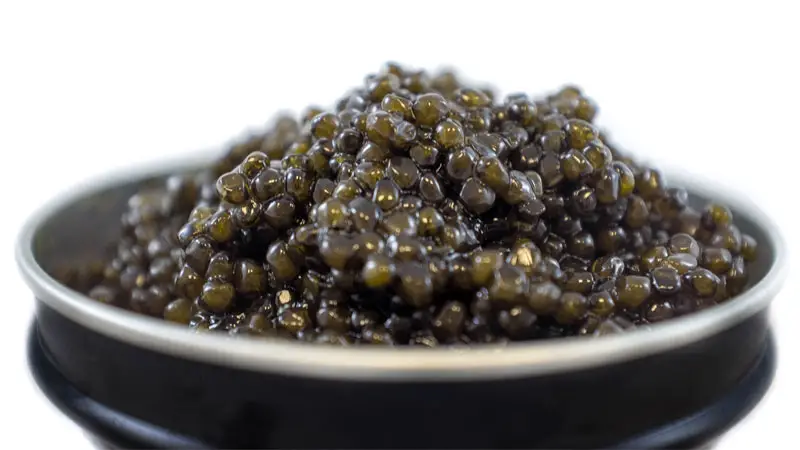
Beluga caviar is one of the varieties of caviar that can be considered true caviar. Like other sturgeons, the beluga sturgeon has been hunted down to almost extinction. It is one of the reasons why beluga caviar is the rarest type of caviar in the world.
The roe itself are colored in shades of pale gray to black. Size-wise, beluga roe are comparatively large. When ingested, the roe exhibit a buttery flavor.
2. Osetra Caviar
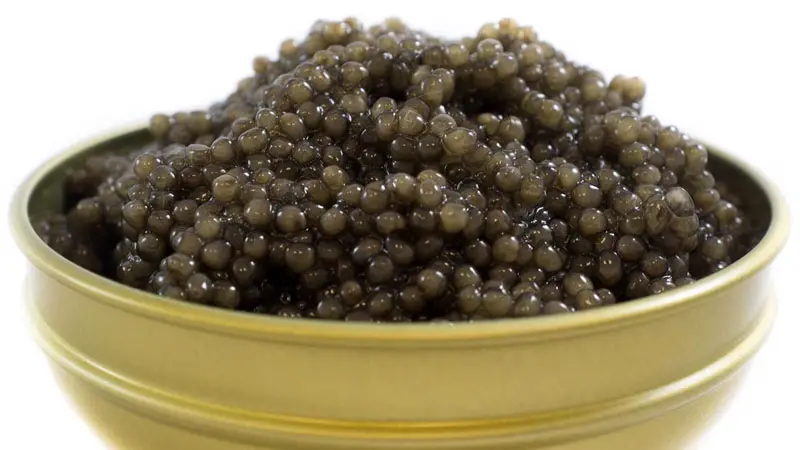
Compared to beluga caviar, osetra caviar has a similar buttery taste with an added fruity flavor. The roe are considerably smaller than the beluga. Shades of grey, brown, and gold, give color to osetra caviar.
See Also: 23 Different Types of Serving Bowls
3. Sevruga Caviar
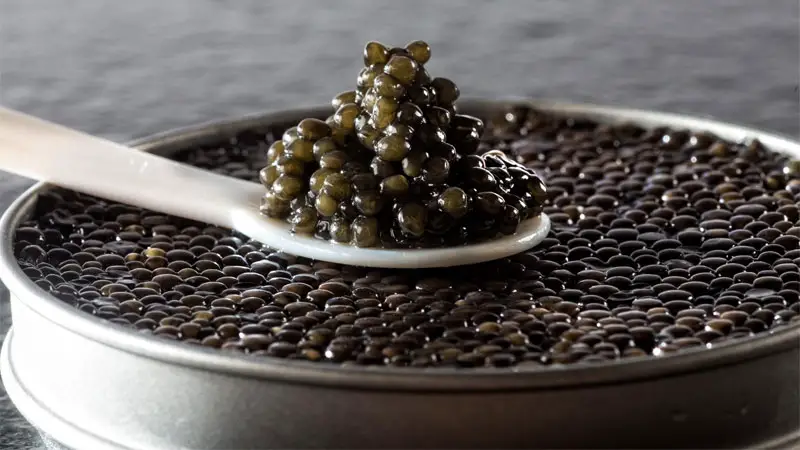
Sevruga caviar have the smallest roe in comparison to the beluga and osetra. It also has a sharper buttery flavor that makes it taste unique. Similar to the beluga, sevruga caviar have pale grey to blackish colors. This type of true caviar is also cheaper.
4. American Caviar
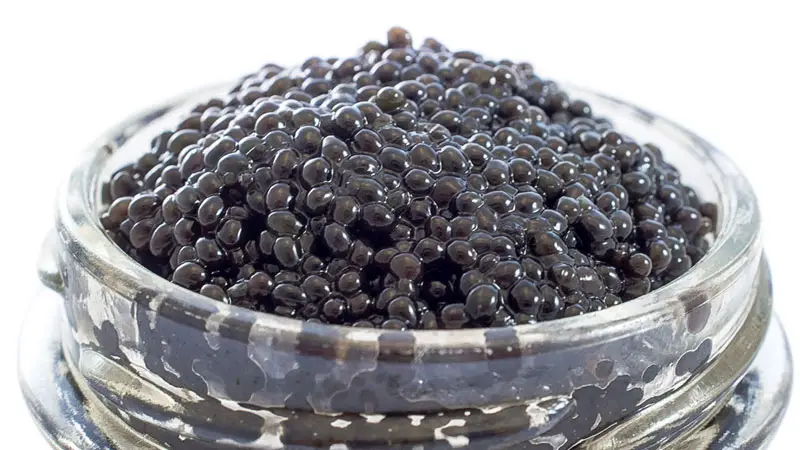
American caviar is a misleading term. The first thing that comes to mind is that American caviar is made or manufactured in the US. That is not true. There are freshwater sturgeon native to American lakes.
Caviar from these fish are called American caviar. This is just a delineation between the American sturgeon and the Caspian Sea sturgeon.
5. Paddlefish Caviar
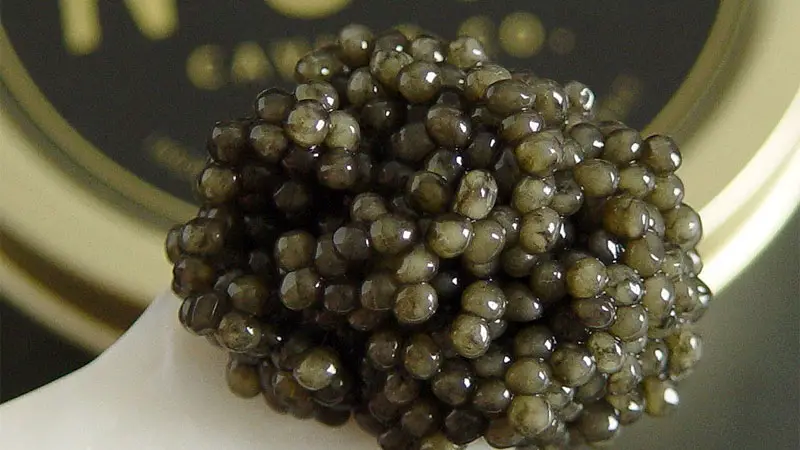
Paddlefish caviar, sometimes referred to as American caviar (for marketing purposes), is an acceptable substitute for beluga caviar. Paddlefish caviar are buttery in flavor.
Paddlefish were formerly predominant in American rivers. With the destruction of its habitat by dams, as well as overfishing for its eggs, the Paddlefish population is rapidity declining.
6. Hackleback Caviar
Hackleback caviar is very flavorful. It has a nutty taste, yet sweet and buttery at the same time. The roe for this caviar comes from the hackleback sturgeon. Like the Paddlefish, the Hackleback sturgeon is also experiencing a decline in population.
7. Bowfin Caviar
Bowfin caviar, similar to paddlefish caviar, is another good substitute for beluga caviar. The bowfin roe are slightly smaller in size when compared to beluga roe. It is also known as choupique in the Cajun regions of America.
8. Salmon Caviar
Salmon caviar is favored by Japanese chefs everywhere. The roe have a distinct salmon taste. Its orange color contributes to the salmon theme. The general size of salmon roe are bigger than beluga roe.
Read Also: 9 Kinds of Fishing Reels
9. Whitefish Caviar
Whitefish caviar originates from fish in the salmon family. This is also a favorite among chefs. It has a crunchy texture that comes together with a mild flavor.
10. Trout Caviar
Trout roe is another interesting variety of caviar. According to some, trout caviar tastes good enough off the spoon. Like salmon roe, trout caviar has a distinctive pop when chewed.
11. Lumpfish Caviar
Lumpfish roe is used to make pasteurized lumpfish caviar. It is ideally used as garnishing or as an appetizer, due to its briny flavor and crunchy texture. Its color come black and red. The lumpfish’s habitat can be found in the cold waters of the Nordic regions.
12. Capelin Caviar
Capelin caviar, similar to lumpfish caviar, is another variety of pasteurized caviar. The roe also come in black and red colors. Unlike the lumpfish, capelin caviar is chewy instead of crunchy.
13. Sterlet Caviar
In both size and overall appearance, sterlet caviar is very similar to sevruga caviar. Its flavor is described as strong and intense. The roe comes from the sterlet sturgeon which produce them after a maturity period between five to seven years.
14. Kaluga Caviar
The kaluga sturgeon is also called the river beluga. The caviar made from the kaluga sturgeon is said to be almost similar in taste and appearance, when compared to the famed beluga caviar. Like the beluga, kaluga caviar is mildly buttery in flavor.
15. Transmontanus Caviar
This type of caviar comes from white sturgeon off the coast of California. Its taste can be described as smooth and buttery, yet mild so it can easily be paired with different types of foods. It has a nice pop when eaten.
16. Alverta Caviar
Also hailing from California, alverta caviar has a warm, buttery flavor with hints of sweetness and saltiness. It usually comes in various shades for green (from bright to dark).
17. Baika Caviar
Considered the darkest caviar in the world, Baika caviar was originally discovered in Siberia. But today, this small to medium sized caviar type can be raised in various lakes around the world. It has a bold flavor and almost a fruity finish.
18. Shassetra Caviar
For true caviar connoisseurs, these firm, medium sized beads come from farmed sturgeon. The come in a light to dark golden color and offer a briny flavor that finishes on a fruity note.
Read Also: 11 Types of Lobster
Caviar Processing Methods
1. Malossol
Lightly salted caviar (around 3.5% to 5% salt content) is referred to as Malossol caviar. Malossol is also a term widely used to refer to high quality caviar. By virtue of being almost unsalted, Malossol caviar is also known to be fresh.
2. Salted
The second method for manufacturing caviar is done by adding more salt. Unlike Malossol caviar, salted caviar has a salt content of 8%. Generally speaking, caviar’s shelf life increases with the increase of salt. Salted caviar is also known as semi-preserved caviar.
3. Pasteurized
Pasteurized caviar is created by heating the caviar, and subsequently placing them into vacuum sealed packaging. Like salted caviar, the natural taste of the fish eggs are affected through the process of making pasteurized caviar.
4. Pressed
Surprisingly enough, the highly mangled form of pressed caviar are preferred by some connoisseurs. The fish roe used in making pressed caviar are the variety that would not make the grade for the other different types of caviar.
The fish eggs used for pressed caviar consists of too soft, broken or damaged, and over ripe eggs. These rejects are salted and treated, and go through a pressing process that changes the consistency of caviar to jam.
Conclusion
This is, by no means, a comprehensive itemization of the known caviar varieties in the world. The effort to catalog the ever growing number of caviar varieties no easy feat. After all, science has not been able to complete a catalog of all fish life in our oceans and rivers.
Just as science is discovering new species of fish, so do we, continue to discover different types of caviar.

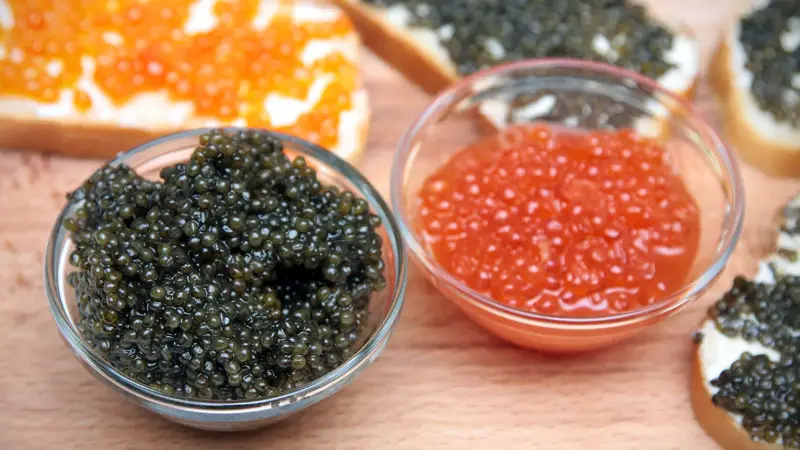
Thank you for the information. A very good place to start our exploration of these little gems!
Another thanks. Well written summary.